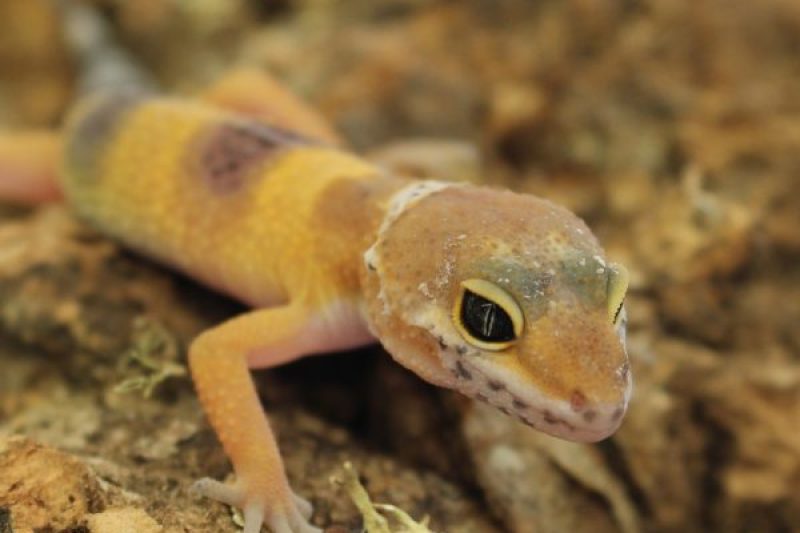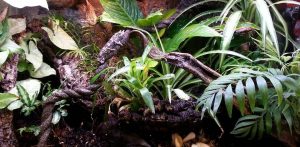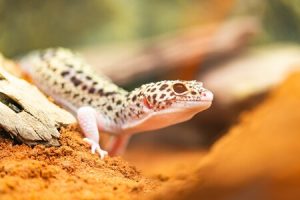
How much does it cost to run my vivarium?
How much does it cost to run my vivarium? We are all becoming more aware of energy costs as the price continues to rise. So

Everything’s going bioactive these days! It’s probably the biggest trend in pet reptile keeping at the moment, and this can only be a good thing as it encourages natural behaviour, provides environmental enrichment for your pet and is nice to look at, too.
Whilst it’s true that forest style humid bioactive vivariums are the most popular, they are not the only option. With the new substrates that are available on the market and the range of lighting, plants and other sundries our pets from drier zones don’t have to miss out.
Also, ‘arid’ doesn’t always mean ‘desert’. It covers open grasslands, light woodland and scrub type environments, so there are lots of different ways we can shape our dry bioactive habitats. Of course, which type we create depends on what sort of animal you would like to keep – after all, giving our pets a more natural lifestyle is what the bioactive movement is all about!
The dictionary definition of bioactive is: ‘(of a substance) having or producing an effect on living tissue’.
What we take it to mean is a system that resembles the living ecosystems that the ancestors of our pets first came from and that their wild relatives still inhabit. It’s a way of using the entire environment to provide a home for our pets that’s as close to nature as possible, and one that takes care of itself to a greater or lesser degree. To this end we assemble a particular type of substrate, clean up crew and plant life to approximate what our pet reptiles would encounter in the wild.
It’s a challenging project, but very rewarding when it comes together.
Not so very long ago, the thought that pet reptiles would need environmental enrichment in the same way that mammals and birds do was considered ridiculous. Reptiles, it was thought, were simple, emotionless creatures that could be kept in a box without any stress to the animal.
As it turns out, reptiles are far more complex animals than we ever could have dreamed! Giving them a naturalistic home with the amount of cover that they instinctively seek, along with different microclimates caused by plants, rocks, and substrates brings out more natural behaviours than you will ever see in a more sterile setup. When you add in the amount of UVB exposure that they would have, you will see your pet reptile behave naturally, and it often improves breeding success. Environmental enrichment is far, far more important than we used to realise.
In short – all reptiles are suited to an arid bioactive vivarium! Grassland and forest edge geckos such as the African fat tail gecko and the East Indian leopard gecko, scrub and semi-desert species such as the knob tail and viper geckos. Agamids such as the ever-popular bearded dragon, star agamas, frilled dragons, North American species like collared lizards, fence lizards, emerald swifts, horned toads… the list goes on.
It’s even possible for the serious desert dwellers, Namibian sand geckos, web footed geckos, American banded gecko species and those masters of the desert, uromastyx species.
Snakes can get in on the act too; Western hognose, king snakes, even corn snakes come under the ‘arid’ heading, and if anything appreciate the enrichment even more than their four-legged cousins do.
So how do we actually create our arid habitat?
Obviously, the choice of housing for your arid bioactive vivarium depends entirely upon the species you are going to keep. Glass vivariums are very popular for their ventilation qualities and the fact that the water used for your plants (more on that below) doesn’t affect the enclosure itself. They also lose heat well, which can make for a more effective temperature gradient. The main restriction is size, so generally, glass vivariums are used for smaller species.
Wooden vivariums are excellent for larger species, as standard sizes can be found that are suitably spacious, and custom builds are not too expensive.
If you use a wooden vivarium, make sure to seal it well. Seal the edges, then seal the whole lower half of the vivarium with pond sealant, pond liner, glass or perspex. It must not only be waterproof but also impermeable to even tiny amounts of moisture.
There are pre-formed backgrounds available that you can use or you can create your own using expanded foam, grout, and sealant. Whichever one you use, that should be attached and sealed before proceeding with the rest of the build. Remember not to cover up the vents if you’re using a wooden vivarium!
It’s very important that your substrate does not remain damp. A layer of expanded clay balls across the bottom of the vivarium is then sealed in with a layer of terrarium fleece – we use fleece to stop even very small particles washing into the drainage layer and clogging it up.
Something that helps in an arid bioactive vivarium is to install a pipe that goes directly into the clay balls through the mesh. This enables you to water from the bottom, not the top; most of the plants you will be using need to not have damp substrate touching the leaves at the base, as this causes them to rot. The pipe (which should be slightly slimmer than standard hose pipe) can be hidden from view with a piece of cork bark or another decor once the build is completed.
Once your drainage layer is in place and sealed, then add your substrate. You have an awful lot of choices these days; soil based types are very popular and are about the closest thing you will get to the wild. You can either use substrates straight from the bag, or use several different types; a layer on the bottom that holds a little more moisture will help to keep your plants healthy without causing them to rot.
This is where things start to get interesting! Hopefully, you will already know what sort of decor your particular pet species will need – rocks, branches, caves or open ground – so now is the time to assemble your decor. Make sure that any rocks are placed directly on top of the fleece covering the drainage layer, as we don’t want our reptiles to burrow under them and possibly drop them on top of themselves.
Piles of rocks should be siliconed together in order to prevent damaging rock falls – although remember to make sure that your reptile cannot get stuck in small gaps between rocks.
Branches should be of hardwood or cork, no softwoods or evergreens due to possibly toxic sap. Once you are happy with your decor, time for the next step!
You will need:
The plant lights designed for use in vivariums are also useful for giving your arid habitat species a brightness boost, which encourages and supports natural behaviour.
So you have your setup almost finished, so what next? Time to add greenery!
Depending on whether you are going for full dry desert or arid grassland you will need different plants.
Desert:
Arid grassland/woodland:
Water your plants well when you plant them, using the pipe that you installed in the drainage layer earlier. This way, the water wicks up from underneath and the top stays dry. This has the added advantage that when your reptile digs a shelter in the substrate they automatically control the level of humidity they are exposed to.
You can also try herb seeds – most Mediterranean herbs like warm, bright, well-drained conditions, so why not give it a go?
There are several species of isopods (woodlice) that love a slightly drier environment. As long as there is a slightly damper area for them to hide in during the day, they will thrive. Species such as:
Springtails will work as long as they have a damp area to retreat to, such as under the water bowl. Mealworms like it fairly dry and will burrow in the substrate as well as clearing up any waste in the tank. Earthworms don’t like it too hot, but in an arid grassland type bioactive they should be able to stay cool and damp enough to thrive.
Blue death feigning beetles are very good in extremely arid desert conditions, but can be rather expensive if your lizard decides to have them for a light snack!
Add leaf litter where possible – under pieces of bark, bundles tucked in corners, drifted around decor especially on the cool side. This gives your clean up crew something to eat when there is no poo or shed skin lying around!
Use halved ceramic flower pots mostly buried in the substrate. Your gecko will excavate under these, and create their own humid hide. As the water seeps up from underneath, it creates a slightly cooler, damper microclimate under the pot.
When selecting plants, avoid anything with spines. A lot of cacti are suitable for the environment, but spines can cause injuries to your pet that can lead to abscesses and other long term problems. Generally, succulents are better, or plants with thick leathery leaves.
If you bear in mind that beardies are (a) big and (b) destructive and plan your environment around this, you won’t go far wrong!
Make sure that your drainage layer is well sealed. It is possible to install a grid of egg crate material on top of the fleece layer, and silicone it to the sides. Bearded dragons are powerful diggers!
Use robust plants such as the sansevierias, and consider protecting their bases with a pot or a ring of rocks. You may have to resign yourself to trying a lot of different plants until you find a combination that survives the robust nature of your pet’s interactions.
Maintenance of an arid bioactive vivarium is generally very simple for these environments once they are established. A few regular checks will help you keep your enclosure looking great:
One of the beauties of bioactive systems is that they need far less interference than the traditional reptile enclosure. Arid bioactive vivariums can be a bit more challenging to establish but are wonderful once they’re up and running. If you have ever wanted to offer your reptile pet a more natural home and have a slice of nature in your living room, now might be the time!
If you would like to find out more about our range of vivariums and reptile supplies available from our reptile shop in Kidlington, please click here to contact our team who are always happy to help. For more information on caring for lots of different pet species, check out our care hub which has a large number of care sheets that you might find useful.
We hope to hear from you soon!

How much does it cost to run my vivarium? We are all becoming more aware of energy costs as the price continues to rise. So

Setting up a new enclosure, especially for the first time, can be very confusing. There are a lot of questions that we are commonly asked

Once we have decided on what species of reptile we want to keep, we have to assemble the equipment needed for it to live a
Copyright 2021 Evolution Reptiles
All rights reserved.